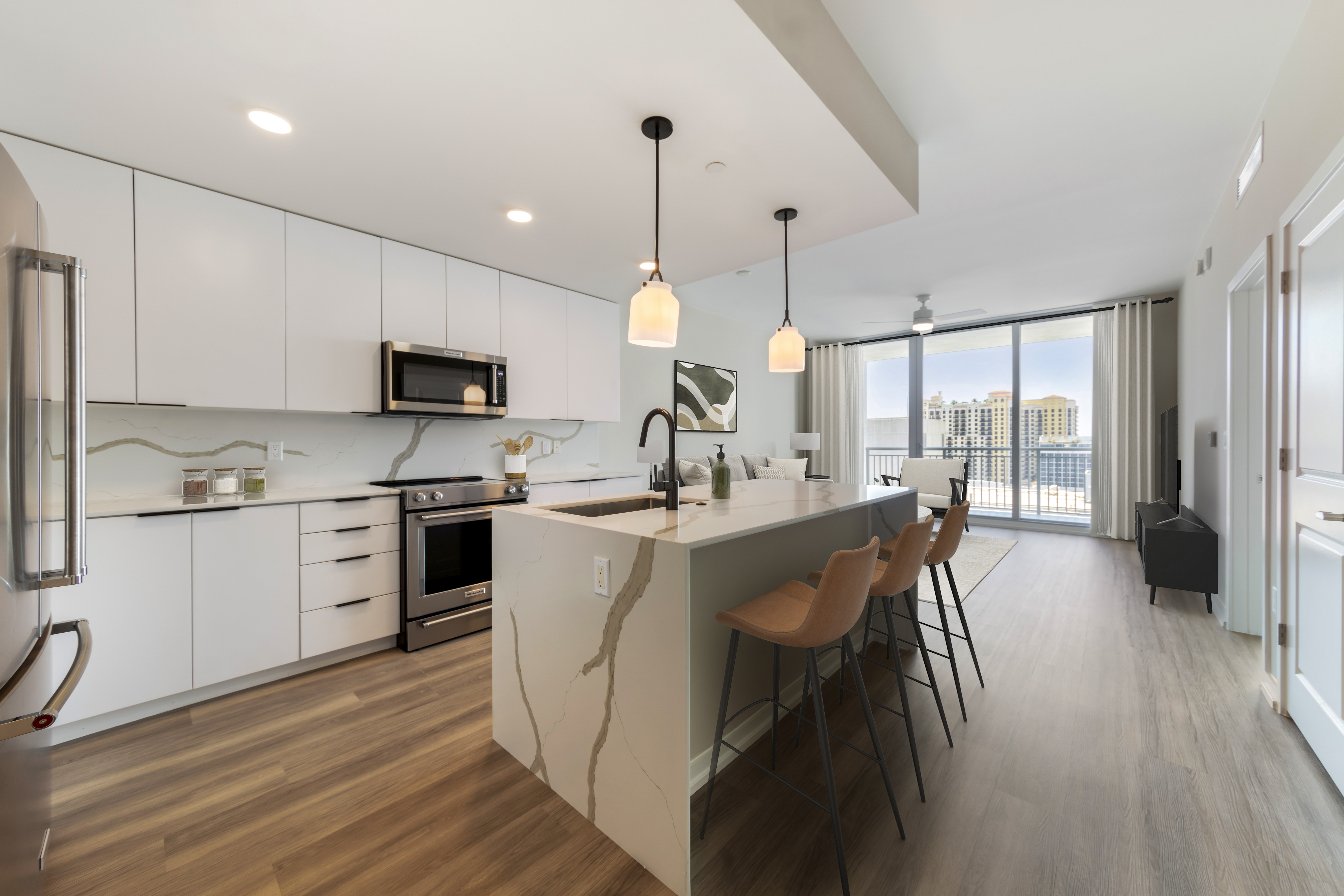Emily Carmody (VP of Capital Projects) and Noah Hager (VP of Asset Management) Discuss How Strategic Renovation Drives Portfolio Outperformance
Emily Carmody, Vice President of Capital Projects, and Noah Hager, Vice President of Asset Management, play key roles in advancing AvalonBay’s strategic renovation strategy.
In today's competitive multifamily landscape, the difference between value creation and value destruction often comes down to one critical question: How do you know when renovation capital will actually drive returns versus when you're simply chasing market trends?

The answer lies in understanding that successful apartment renovations aren't about implementing a standard playbook across your portfolio. They're about reading each market's competitive dynamics and positioning your assets precisely where demand exceeds supply. Our Apartment Only renovation program exemplifies this approach, consistently delivering strong yields on cost by combining local market and customer intelligence with centralized execution expertise.
Market Intelligence Drives Capital Allocation
The foundation of our renovation strategy starts with a simple but powerful insight: not all rent gaps represent opportunities. When we see a community with rents substantially below comparable properties, our first question isn't "what should we renovate?" It's "why does this gap exist, and can capital investment close it profitably?"
This market-first approach has revealed critical insights that drive our capital allocation decisions. Kitchens, baths, and flooring consistently deliver the strongest returns, but the specific combination varies dramatically by market. In some locations, a full renovation positions us competitively against new supply. In others, strategic component upgrades - perhaps just kitchen countertops and appliances - capture the available rent premium without over-investing.
A key differentiator is our ability to read these market signals and our customer preferences accurately. When a brand-new competitor is charging the same rent as our existing units, that's not a renovation opportunity - it's a signal that the market may already be efficiently priced. This kind of market intelligence prevents capital misallocation that plagues many renovation programs.
Decentralized Intelligence, Centralized Execution
Our competitive advantage lies in combining the market intimacy of our decentralized regional teams with the execution efficiency of centralized design and capital projects expertise. Regional teams understand the nuanced competitive dynamics of their markets - they know which amenities drive leasing velocity and which upgrades command premium rents. Meanwhile, our centralized teams leverage enterprise-wide purchasing power and design standards to deliver these insights cost-effectively.
This structure allows us to ask the right questions: How many upgraded units can this specific market absorb? What's the optimal renovation scope to achieve our return threshold? How do we sequence the work to minimize disruption and maximize lease-up velocity?
Match Investment Intensity to Market Opportunity
Our tiered renovation approach reflects this market-driven philosophy. Rather than defaulting to comprehensive renovations, the discipline lies in matching the investment to the opportunity, not the other way around.
This methodology has proven particularly valuable in today's environment, where construction costs remain elevated and new supply continues to pressure certain markets. By understanding exactly where renovation capital creates value - and where it doesn't - we're able to optimize portfolio performance while maintaining the disciplined capital allocation that drives superior growth.
The result is a renovation program that doesn't just improve individual assets but strategically positions our entire portfolio to capture rent growth opportunities across diverse market conditions. In an industry where capital allocation often follows intuition rather than insight, this data-driven approach to renovation continues to differentiate our performance and drive value creation for investors.
MEDIA INQUIRIES

4040 Wilson Blvd. Suite 1000
Arlington, VA 22203
T: (703) 329-6300
media_relations@avalonbay.com
Some of the materials above have been published by third parties and their content has not been confirmed by AvalonBay. The materials in this Newsroom have been made available for informational purposes only and do not constitute an offer to sell, or a solicitation of an offer to buy, securities. No part of the Newsroom materials shall form the basis of, or be relied on in connection with, any contract or investment decision under any circumstance for any purpose. The materials in this Newsroom may include forward-looking statements. Forward-looking statements, by their very nature, are subject to inherent risks and uncertainties are based on several assumptions, both general and specific, which give rise to the possibility that actual results or events could differ materially from expectations expressed in or implied by such forward-looking statements. These statements are not guarantees of future performance or events and AvalonBay cautions you against relying on any of these forward-looking statements. Please refer to the materials filed publicly by AvalonBay Communities, Inc. with the SEC, including its most recent Forms 10-K and 10-Q, for additional information about AvalonBay and about the risks and uncertainties related to its business, which may affect the statements made on this website.
